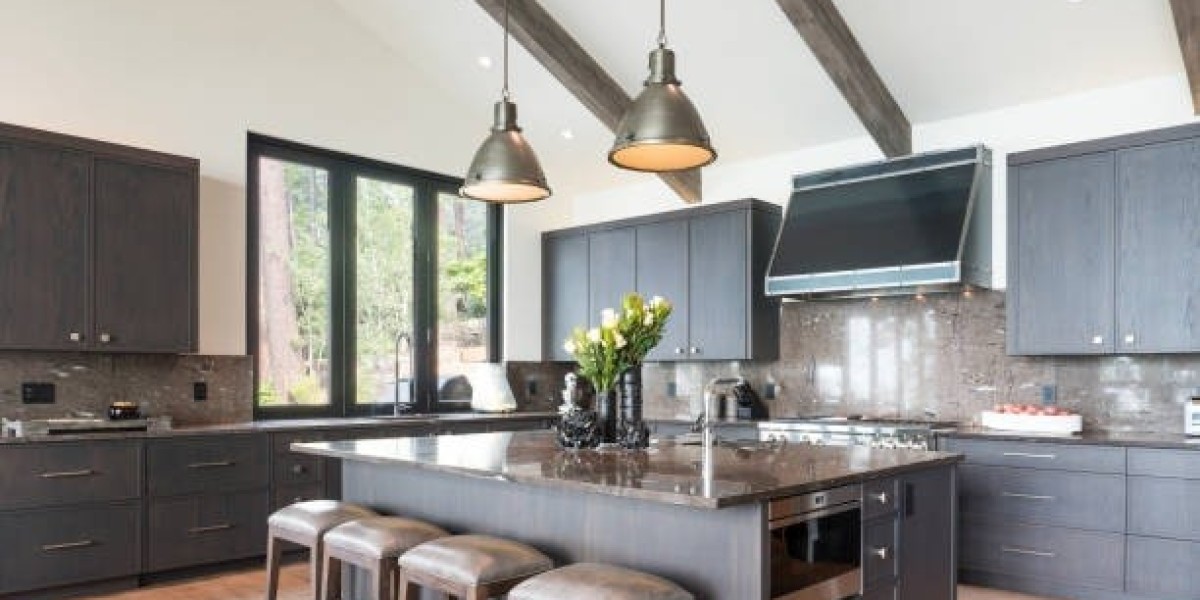Understanding Finish Carpentry:
Finish carpentry encompasses a wide range of tasks, each focusing on the meticulous detailing and refinement of a structure's interior. Unlike rough carpentry, which deals with framing and structural elements, finish carpentry involves adding the finishing touches that enhance both the functionality and aesthetics of a space. Some common applications of finish carpentry include:
Trim Work: Trim work involves installing moldings, baseboards, crown moldings, and other decorative elements to conceal joints and transitions between surfaces, adding architectural interest and visual appeal.
Cabinetry: From kitchen cabinets to built-in shelving units, finish carpentry plays a crucial role in creating functional storage solutions while enhancing the overall design aesthetic.
Doors and Windows: Installing and trimming doors and windows requires precision to ensure proper fit, smooth operation, and a seamless integration with the surrounding walls.
Staircases: Finish carpentry extends to staircases, where intricate balustrades, handrails, and newel posts are crafted to create visually stunning focal points within a home.
Tools of the Trade:
Achieving professional results in finish carpentry requires the right tools for the job. While the specific tools may vary depending on the task at hand, some essential tools commonly used by finish carpenters include:
Miter Saw: Ideal for making precise angled cuts on moldings, trim, and other woodwork components.
Finish Nailer: A pneumatic or cordless finish nailer is essential for securely fastening trim and molding without leaving visible nail holes.
Router: Used for shaping edges, creating decorative profiles, and cutting joinery such as dadoes and rabbets.
Chisels and Hand Planes: Essential for fine-tuning joints, removing excess material, and achieving a smooth finish on wood surfaces.
Measuring and Marking Tools: Accurate measurements are crucial in finish carpentry, so tools like tape measures, combination squares, and marking gauges are indispensable.
Techniques for Success:
Mastering finish carpentry requires a combination of technical proficiency and artistic flair. Here are some essential techniques to help you achieve professional results:
Precision Cutting: Whether it's mitered corners for trim or dovetail joints for cabinetry, precise cutting is essential for achieving tight-fitting, seamless connections.
Proper Installation: Take the time to ensure that trim pieces, cabinets, and other elements are installed level, plumb, and square for a polished, professional look.
Attention to Detail: Pay close attention to the small details, such as sanding edges smooth, filling nail holes, and applying the appropriate finish to enhance the natural beauty of the wood.
Planning and Layout: Careful planning and layout are crucial to avoid costly mistakes and ensure that all elements of a project come together harmoniously.
Patience and Persistence: Finish carpentry is a meticulous process that requires patience and attention to detail. Don't rush the job; take the time to do it right, and the results will speak for themselves.
Common Challenges and Solutions:
While finish carpentry can be incredibly rewarding, it also comes with its fair share of challenges. Some common issues faced by finish carpenters include:
Wood Movement: Wood is a natural material that expands and contracts with changes in humidity and temperature, which can lead to gaps or warping over time. Minimize these effects by using appropriate fastening techniques and allowing for adequate expansion and contraction.
Imperfect Walls: Uneven walls and floors can present challenges when installing trim or cabinetry. Shimming, scribing, or using adjustable mounting hardware can help compensate for irregularities and ensure a professional finish.
Mitigating Tearout: When working with power tools like routers and saws, tearout can occur, leaving unsightly marks on the wood surface. Use sharp blades and take light passes to minimize tearout, or use a backing board to support the workpiece during cutting.
Finishing Techniques: Applying the right finish can enhance the natural beauty of wood while providing protection against moisture and wear. Experiment with different stains, paints, and topcoats to achieve the desired look and durability.
Conclusion:
Finish carpentry is the art of transforming raw materials into refined, elegant spaces. By mastering essential techniques, acquiring the right tools, and embracing attention to detail, you can elevate your woodworking skills to create beautiful, functional interiors that stand the test of time. Whether you're a seasoned professional or a DIY enthusiast, the journey of mastering finish carpentry is one filled with creativity, craftsmanship, and endless possibilities.







